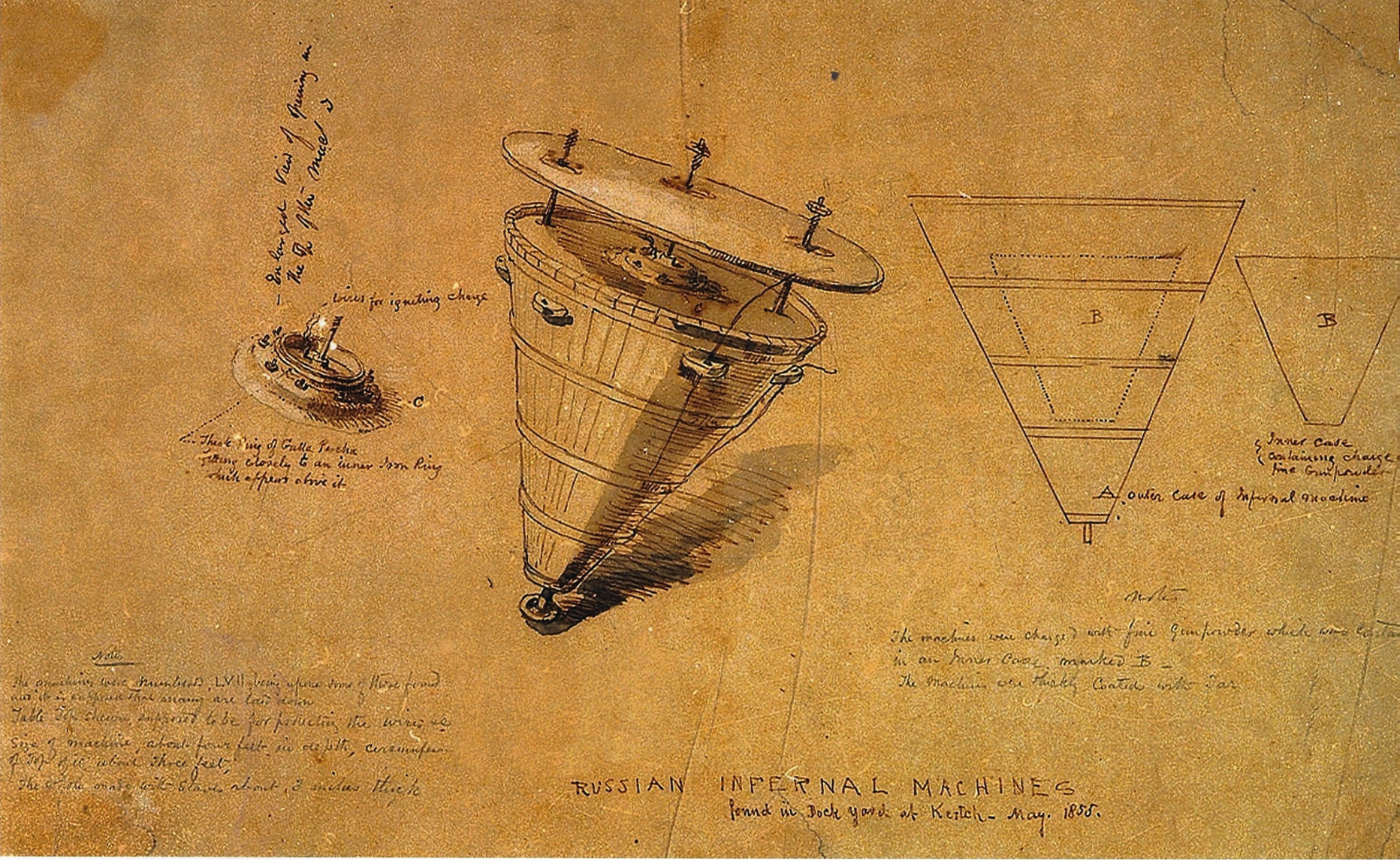I’ve found a very interesting print of a Russian Infernal Machine (i.e. an “IED”) from 1855 from the Crimea, with an interesting back story, demonstrating once again that technical exploitation of IEDs as part of “Weapons Technical Intelligence” in nothing new.
The print is shown below. It was drawn by a British Naval artist, Oswald Walter Brierly who was attached to the British Naval fleet at Crimea as an artist in residence.

In May 1855 British forces, assisted by Turkish and French contingents, conducted a large scale raid to seize the Russian held port of Kertch. They destroyed several magazines, seized weapons and found this IED in the Dockyard. The Dockyard was clearly being used to manufacture a number of devices, ammunition and other munitions. The device was recovered and examined carefully along with other material.
From a military perspective the raid turned into something of an embarrassment – although it achieved its aims, the behaviour of the Turkish and British troops was appalling as they committed rape, pillaged the town and destroyed everything they saw. From a technical perspective the device is interesting as it shows, I believe, an evolution from the designs of Immanuel Nobel and Professor Jacobi found in the Baltic and seized earlier by the British
a. The Jacobi Fuze (designed, I believe, by Immanuel Nobel, father of Alfred Nobel
b. Improvised Sea mines from the Baltic – 1854
c. American WTI in the Crimean War
From a separate source I have the following description of the device shown in the image above, which consisted of six of the charges shown, operating in a chain:
It consisted of six vessels of wood, shaped like two cones placed base to base, each 21/2 feet long by 11/2 feet in diameter at the base, and of several similar vessels of a conical form, and of equal dimensions, loaded to float with the apex downward, the base being provided with a cover to fall on a prepared fuse and ignite the charge upon contact with any floating object. These vessels were attached to each other by wires, and hen placed in the water would look like a line of buoy; but the wires were carried to the poles of a galvanic battery within the Russian magazine on shore.
The diagram above shows an electrical initiator in the upper part of the device and describes a “gutta percha” seal system to protect it from water ingress.
I think this then is an evolution of the devices seen before – using a “Jacobi fuze” as a contact initiator in the same manner as the devices described in the links above, but having a secondary, electrical initiation system as an alternate. Thus, they are one step more sophisticated in combing the two.
